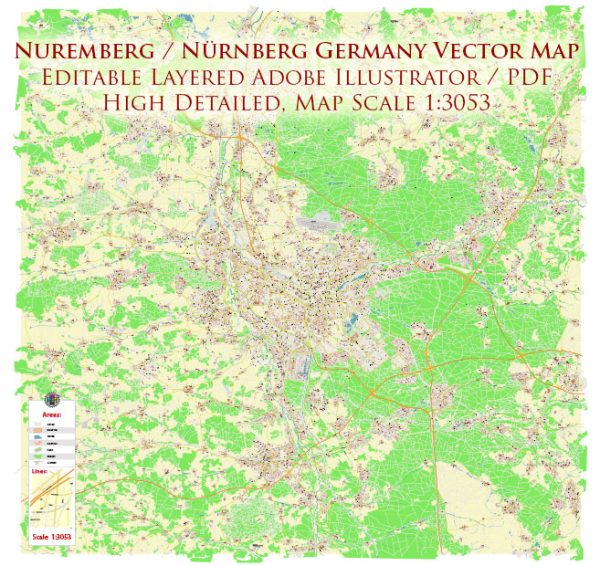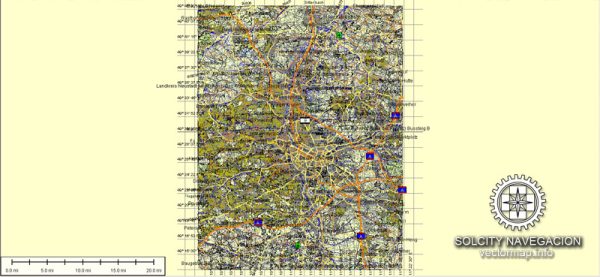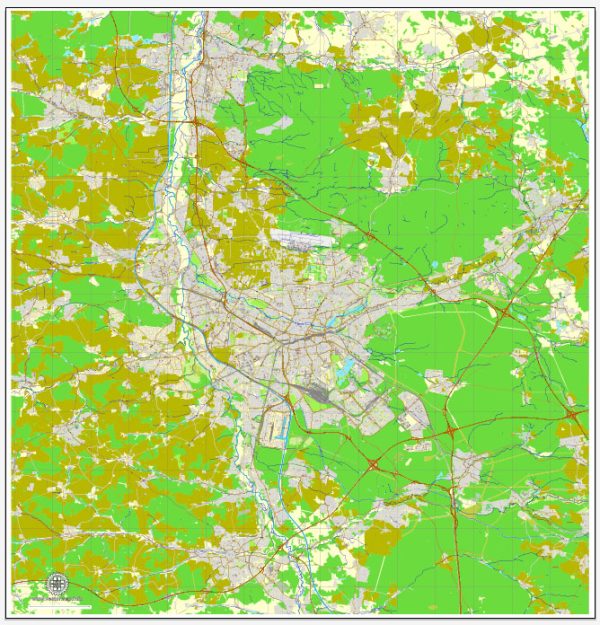Nuremberg, located in the Bavaria region of Germany, is a city rich in history and architecture. Its architectural heritage reflects various periods, including medieval, Renaissance, and Baroque styles. Here’s a description of some of the key architectural elements and landmarks in Nuremberg:
- Medieval Architecture:
- Nuremberg Castle (Nürnberger Burg): This medieval fortress dominates the city’s skyline. It is a prime example of medieval architecture, with its impressive fortifications, towers, and walls. The castle complex includes the Imperial Castle, which served as the residence of the Holy Roman Emperors, and the Burgraves’ Castle.
- Old Town (Altstadt):
- The Old Town of Nuremberg boasts well-preserved medieval architecture, including half-timbered houses and narrow, cobblestone streets. Hauptmarkt, the central square, is surrounded by historic buildings and features the famous Beautiful Fountain (Schöner Brunnen), an ornate, Gothic-style fountain.
- Churches:
- St. Sebaldus Church (St. Sebald): This church is a stunning example of Gothic architecture, featuring an ornate façade, intricate stained glass windows, and numerous sculptures.
- St. Lorenz Church (St. Lorenz): Another magnificent Gothic church, St. Lorenz is known for its twin spires, intricate details, and impressive interior.
- Albrecht Dürer House:
- The home of the famous artist Albrecht Dürer is a well-preserved 15th-century half-timbered house. It serves as a museum and provides insight into the life and work of the artist, offering an example of Renaissance architecture.
- City Walls:
- Nuremberg is surrounded by extensive city walls and fortifications, many of which are well-preserved. You can walk along the wall in some areas, enjoying views of the city and the surrounding landscape.
- Market Halls (Weißgerbergasse):
- The Weißgerbergasse is a picturesque alley lined with colorful, traditional houses. It is a great place to experience the charm of Nuremberg’s historic architecture.
- The Germanisches Nationalmuseum:
- This museum is the largest cultural history museum in the German-speaking world and is housed in a neo-Gothic building. The museum itself is an architectural masterpiece, and it showcases a vast collection of art and artifacts.
- Modern Architecture:
- While Nuremberg is known for its historic architecture, you can also find examples of modern architecture in the city. The Documentation Center Nazi Party Rally Grounds, for instance, is a striking modern building that tells the story of the city’s Nazi history.
Nuremberg’s architecture is a testament to its rich history and its ability to blend historical charm with contemporary elements. Whether you are interested in medieval, Renaissance, or modern architecture, Nuremberg has something to offer every architectural enthusiast.




 Author: Kirill Shrayber, Ph.D.
Author: Kirill Shrayber, Ph.D.